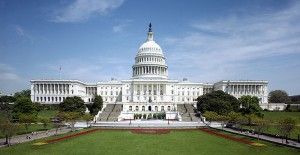California’s congressional wish list
by CalWatchdog Staff | November 20, 2012 9:40 am
 [1]Nov. 20, 2012
[1]Nov. 20, 2012
By Joseph Perkins
California Reps. Zoe Lofgren[2], D-San Jose, and Ken Calvert[3], R-Corona, ought to meet up for coffee while they’re back in the Nation’s Capital for Congress’ post-election lame duck session.
The chairs of state’s Democratic and Republican congressional delegations, respectively, should set partisan differences aside — if only for a brief, shining moment — and draw up a list of issues vitally important to their home state, on which both delegations can work together.
If Lofgren and Calvert asked me — and, for some reason, neither has returned my phone calls — I would suggest the following:
The fiscal cliff. Insist that their fellow lawmakers use the lame duck session to reach a bipartisan agreement that prevents the federal government from plunging over the dreaded cliff, otherwise more than $500 billion in federal tax increases, along with more than $100 billion in across-the-board spending cuts, will take effect this coming New Year’s Day.
If Congress fails to make a deal, no state will be more adversely affected than California, which would fall back into recession, plunging the state government into another budget crisis, as a report last week by the state Legislative Analyst’s Office[4] warned.
“We examined one possible recession scenario,” the LAO stated, ominously, “in which state revenues were about $11 billion lower than in our forecast for 2012-13 and 2013-14 combined.”
Military funding. Accept reductions in defense spending as the Obama administration winds down military operations in both Iraq and Afghanistan, but oppose the draconian cuts slated to take effect through automatic sequestration.
More than 10 percent of federal defense dollars are spent in California, according to a study by Bloomberg Government. That amounts to a $57 billion a year boost to the state economy.
Sharp reductions in defense outlays will be a shock to the state economy, hurting California companies that have long contracted with the Pentagon, causing more than 135,000 defense-related job losses throughout the state, according to a report by the George Mason University Center for Regional Analysis. [5]
Immigration Reform. Take leadership on Capital Hill in creating a pathway to earned legalization for undocumented immigrants, including the estimated 3 million here in California.
Now is a good time to do something, inasmuch as illegal immigration is down a third since President Obama was elected four years ago, with net migration from Mexico estimated at zero, according to The Wall Street Journal.
As to deterring future illegal immigration, the best way is by making it less daunting for those seeking opportunity — work, education, business — to come legally.
How about a reinvention of the Bracero program, which lasted from the early 1940s to the mid-1960s, which allowed Mexican laborers to enter the United States legally to perform temporary contract work (usually in the agricultural sector) before returning to their native country?
Electrical Grid. Urge lawmakers to take steps to modernize and expand the nation’s electrical grid. The California Independent System Operator[6], which manages the flow of electricity across the high-voltage, long-distance power lines that make up 80 percent of California’s power grid, depends on the national grid to deliver atoms from out of state to meet the California demand of 30 million business and residential users.
As it is, much of the nation’s grid was built more than a half-century ago. Today it is a patchwork system that ultimately will break down, warned a report by the American Society of Civil Engineers,[7] unless $673 billion is invested in the grid between now and 2020.
That massive investment needn’t be borne entirely by taxpayers. Curt Hebert Jr., former chair of the Federal Energy Regulation Commission, says there is plenty of private capital available for investment in electrical infrastructure. That is, if the feds give them sufficient incentives to invest.
- [Image]: http://www.calwatchdog.com/2011/11/03/congress-gets-rich-how-bout-you/capitol-u-s-upside-down-wikipedia/
- Zoe Lofgren: http://lofgren.house.gov/index.php?option=com_content&view=article&id=52&Itemid=32
- Ken Calvert: http://calvert.house.gov/aboutken/biography.htm
- a report last week by the state Legislative Analyst’s Office: http://www.lao.ca.gov/reports/2012/bud/fiscal-outlook/fiscal-outlook-2012.aspx
- George Mason University Center for Regional Analysis. : http://cra.gmu.edu/pdfs/Economic_Impact_of_Budget_Control_Act.pdf
- The California Independent System Operator: http://www.caiso.com/Documents/CompanyInformation_Facts.pdf
- a report by the American Society of Civil Engineers,: http://www.asce.org/uploadedFiles/Infrastructure/Failure_to_Act/energy_report_FINAL2.pdf
Source URL: https://calwatchdog.com/2012/11/20/californias-congressional-wish-list/